Camp Jones Gulch: Childhood Connections Create Conservationists
video by Jordan Plotsky.
Rare old-growth redwoods, seven different ecosystems, and nine miles of streams have supported countless plant and wildlife species on these 920-acres for millenia. For the last 80 years this area has been known as Camp Jones Gulch, and these acres have connected three to four generations—nearly one million young people—to nature. But for The Y, managing 1,000 acres facing increasing threats of wildfire and climate change required a new approach. By protecting Camp Jones Gulch’s ancient redwoods, forests, streams, and the wildlife they support forever with a conservation easement, you can ensure that generations to come can have their interest and joy sparked by nature and become lifelong stewards.
Benefits and Barriers
In San Mateo County, for many 5th and 6th grade campers, attending Camp Jones Gulch isn’t just their first time being away from home without family, its their first time really experiencing nature—an experience that the Y of San Francisco–which runs the camp–and researchers agree are helping to improve children’s independence, confidence, and physical, mental, and social health. Often those most impacted by the environmental pollution and stressors of urban living and who could benefit the most from time in nature, have the least access to it. Camp Jones Gulch helps to overcome barriers, like transportation, fees, mobility needs, and underrepresentation that can leave people feeling daunted, unwelcome, or like nature isn’t meant for them.
Sean Dries, Branch Operations Director at Point Bonita YMCA, explains, ”All nature-based education and recreation programs are focused on supporting communities most impacted by climate change which are also typically the same communities which have experienced historic challenges having access to or feeling welcomed in public outdoor spaces.” Through strategic partnerships, every 5th and 6th grader in San Mateo County has the opportunity and transportation to attend a week at Camp Jones Gulch for free. “Camp Jones Gulch is foundational to creating a lasting legacy of environmental stewardship,” said Dries. That connection to the outdoors extends well beyond a week at camp and is creating the next generation of conservationists.
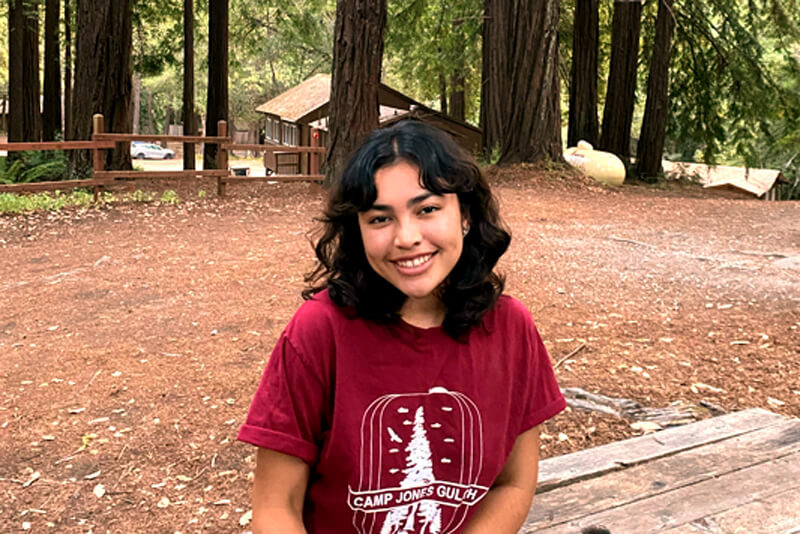
For Gabriela Jimenez, the love of nature was always there—she couldn't remember a time before she became enamored with helping her mom in their large backyard garden—and she was fortunate to have many opportunities to visit nature, but attending Camp Jones Gulch allowed her to broaden her connection with nature, others, and herself. She first attended Camp Jones Gulch when she was 8 years old. “Going to camp was one of the most meaningful experiences of my life,” she said.
Seeing nature at the scale of Camp Jones Gulch, especially the size of the giant, ancient redwood trees, compared to her garden at home was a new experience. “It was fascinating to see the different animals and plants that Camp Jones Gulch was home to,” Jimenez said. “During my first time at camp, I was in awe of nature but I also felt at home because of how welcoming camp is.”
After her first year at Camp Jones Gulch, Jimenez was hooked and went back each summer and with her class for 5th grade outdoor education, “camp is the best part of every year for me,” she said. Among the many treasured memories she has of Camp Jones Gulch over the years, a favorite was an activity during her third year of camp to build a fort with a neighboring cabin in the roots of several trees, “It was the biggest fort I’ve ever made since there were so many people helping out. I always think back on making that fort because I’m still close friends with Edward, who was a camper who helped my cabin make the fort,” Jimenez explained.
Claire Elkes was also fortunate to have spent lots of time outdoors camping and hiking, “my parents made it part of my life before I could really remember–before I could even walk.” But when she attended Camp Jones Gulch for outdoor education in 5th grade, it also left a lasting impression. She recalled a night hike, campers kissing banana slugs, all the lyrics to the “zero food waste” song, and perhaps most importantly getting to experience nature with friends.
“It’s nice for us to be able to get outdoors and spend time with friends away from our phones and computers,” Elkes said. Now, she is following her appreciation for nature to Pacific Northwest College of Art to study photography: “Landscapes and nature photography are my favorite.” She hopes youth will continue to be able to experience Camp Jones Gulch like she did and noted not everyone has the ability to get outdoors as often as she did, “it gives people who want to go outside a chance to go.”
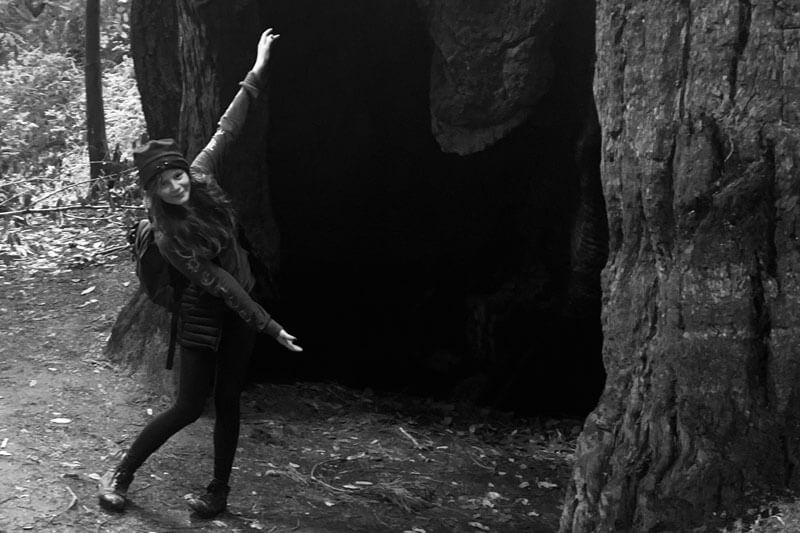
From Camps to Careers
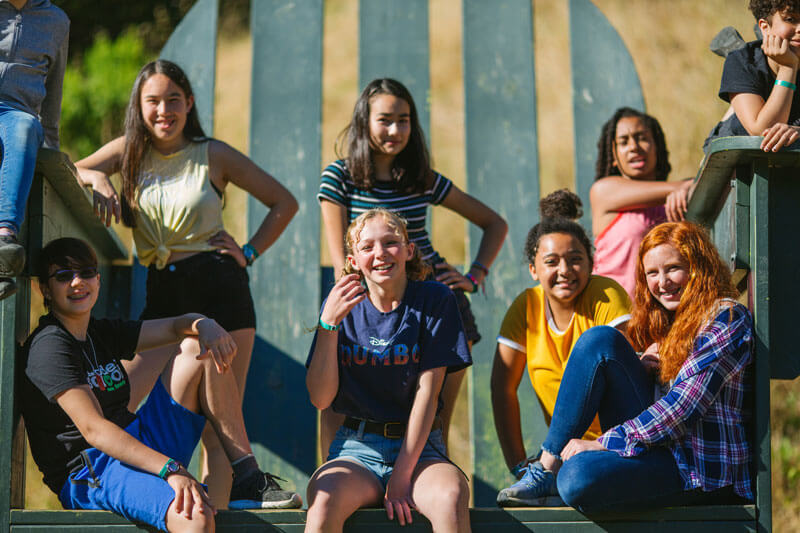
After their introduction to nature at Camp Jones Gulch, the Y of San Francisco offers a myriad of pathways and programs for 5th and 6th grade camp alumni to continue to experience the outdoors and deepen their relationship with nature. By creating programs that appeal to different interests and ways to interact with nature for youth of all ages, young campers stay engaged with the outdoors and are encouraged to go beyond just attending camp to pursuing careers in camps, parks, or forestry.
The result is more youth connected with nature and more opportunities for younger generations to see people that look like them in careers connected to the outdoors, which can help to knock down the barrier that youth of color may feel they don’t belong in nature or that it doesn’t belong to them. “Camp Jones Gulch's Counselor-in-Training program gives youth experience working in outdoor recreation with a focus on creating a diverse pipeline of teens excited to work in support of nature-based programming,” says Dries.
Since her first year as a camper when she was just 8 years old, Jimenez was amazed by the counselors at camp, “I always looked up to them and it made me want to become a counselor in the future.” After coming back to Camp Jones Gulch every summer, she volunteered as a Junior Counselor for four weeks in 2019 and this year became a professional counselor. “It means so much to me to be able to give other youth the experiences that changed my own life,” she said.
Now, she leads campers through the fort building activity from her own cherished memory making forts with her friend Edward who also became a counselor at Camp Jones Gulch. Jimenez explains the challenge to build a fort to withstand rain and wind—which she tests by pouring water on the fort roof to see if it seeps through and shaking it to test its wind resistance. Activities like this teach survival skills that empower campers to feel more confident outdoors and also “to work with a group and share ideas to build effectively.” “It feels like a full circle moment,” Jimemez said.
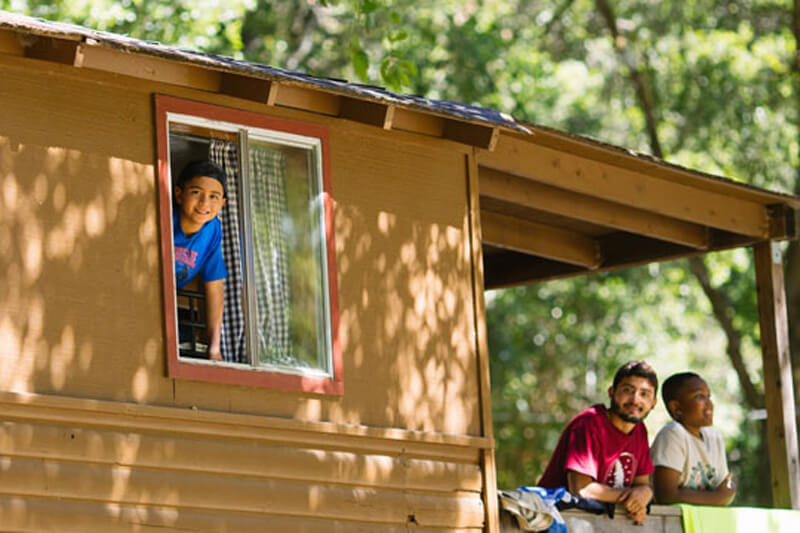
Cultivating Conservationists
Although Jimenez and Elkes both enjoyed outdoor experiences for as long as they can remember, Jimenez notes that most of Camp Jones Gulch’s campers live in cities and aren’t used to being in nature. She shared a story of the transformative experience of Camp Jones Gulch for one of her campers:
“I had a camper this summer who began the week terrified of the outdoors and being surrounded by bugs. After a long few days of trying to make the transition easier for her, we had a special moment at the garden where she learned about our symbiotic relationship with nature as humans. It changed her perspective and it was clear that she was trying to overcome her fears about being outside. On our last night that week, we camped outside in our sleeping bags on just a tarp. The camper loved the experience so much that she told me she plans on asking her family to do an outside camping trip as well. It was so beautiful to see the camper’s growth throughout the week.”
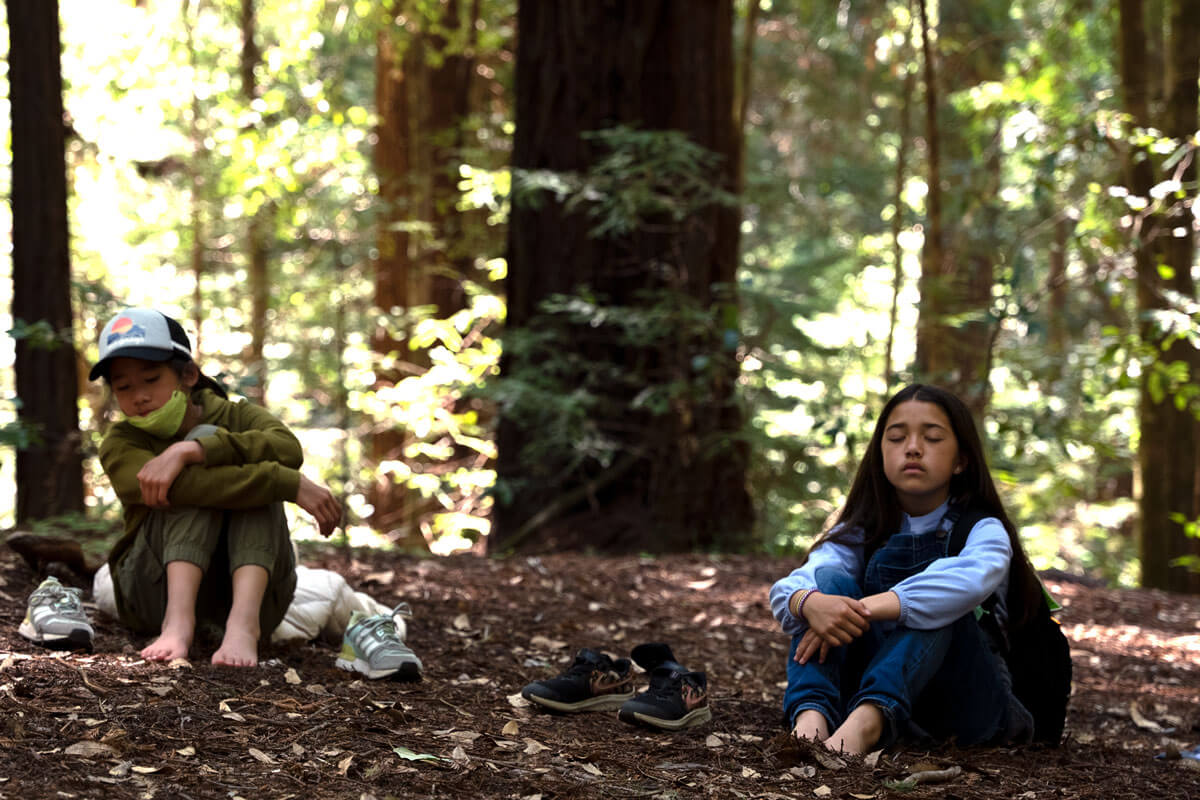
Every week at Camp Jones Gulch, hundreds of young campers like Jimenez’s have their first introduction to nature, and hundreds more like Jimenez and Elkes broaden and solidify their passion for nature and find pathways to pursue a professional or lifelong commitment to protecting and sharing the outdoors. “I am a proud environmentalist and activist for the protection of nature,” Jimenez said.
The results of the Y of San Francisco’s programs for youth are clear, however permanently protecting the camp’s nearly 1,000 acres does not fall into the Y’s considerable skillset. That is where Sempervirens Fund’s partnership with the Y comes in. A collaboration between the Y of San Francisco and Sempervirens Fund will permanently protect Camp Jones Gulch’s old-growth redwoods, forests, and streams forever through a conservation easement which will allow Sempervirens Fund to care for the land and increase its resilience for the challenges ahead.
The conservation easement will also provide funding for Camp Jones Gulch’s outdoor education programs that lay the foundation for lifelong environmental stewardship for the next generation who will care for lands after us. Dries explained, “The partnership with Sempervirens will provide a foundation of fiscal sustainability from which Camp Jones Gulch and the Y of San Francisco will be able to continue and deepen its environmental education and recreation programming.”
To protect Camp Jones Gulch’s forests for wildlife and generations of youth, Sempervirens Fund has launched the Redwoods Now, For All, Forever campaign to conserve redwood forests and help make them accessible for all youth to connect with and learn to care for. “By inspiring young people today, we will create a future where pro-environmental practices are the norm,” Dries said.
More to Explore
- Read more about Camp Jones Gulch’s innovative programs connecting youth to nature
- Read more about Camp Jones Gulch’s diverse habitats and how a conservation easement will protect and care for them
- Watch The Magic of Learning in Nature with Camp Jones Gulch Director Carrie Herrera